LEGO just revealed the latest in the LEGO Modular Buildings series, the #10243 LEGO Parisian Restaurant. This is the 9th building in the LEGO Modular Series, and one of the most interesting ones – at least in my opinion. Below is the official description, pictures, and the LEGO designer-video, showing you all the details. So let’s take a look! 🙂
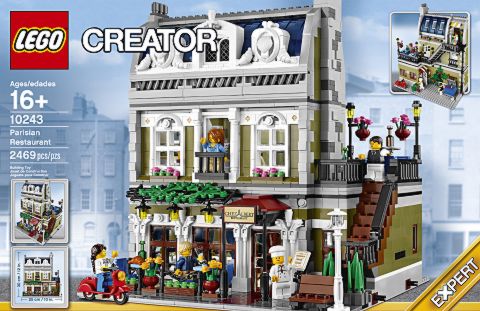
#10243 LEGO MODULAR PARISIAN RESTAURANT: Have an unforgettable evening at the amazing Parisian Restaurant! It’s very busy in the Parisian Restaurant. As a scooter zips by, inside the waiter rushes between the tables as the nervous young man gets ready to propose with the ring! It’s just as hectic behind the scenes, with the chef busily preparing the food. This beautifully detailed building is the setting for so many stories and is a great addition to the modular building series. The Parisian Restaurant has a fully-stocked, blue and white tiled kitchen with tableware as well as a cozy apartment with pull-down bed, kitchenette and fireplace. On the top floor is the artist’s room with a studio that includes a cast iron heater, easel, paintbrush and two works of art by the aspiring artist. Outside, stairs lead down to the roof terrace lined with hanging lanterns and flowers where the diners eat alfresco-style. This amazing Parisian Restaurant model even includes a facade with croissants, clams and feather details that recapture the feel of Paris.
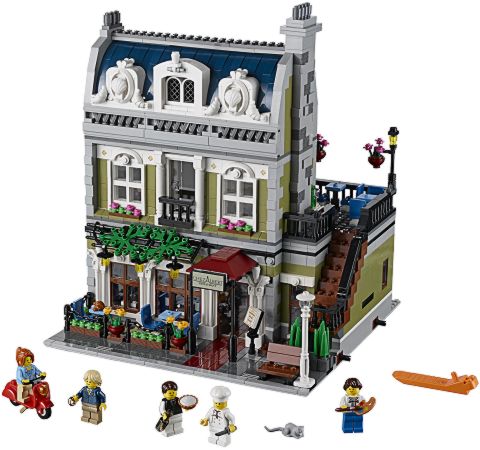
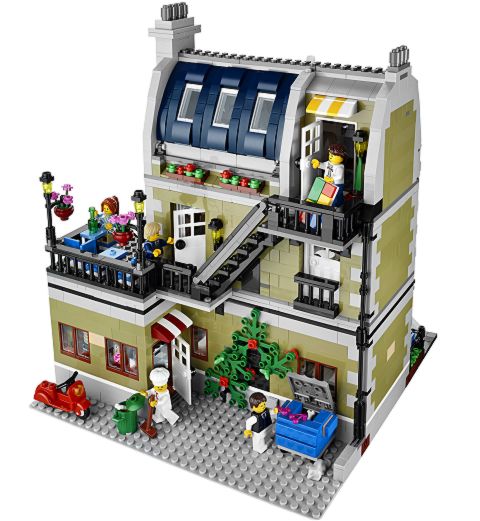
- Includes 5 minifigures: chef, waiter, girl, and a romantic couple
- Also includes a rat, seagull and 2 clams
- Kitchen features blue and white tiled floor, lots of kitchen units, and a variety of utensils
- Second-floor apartment features a pull-down bed, kitchenette and fireplace
- Top floor features an opening roof revealing an artist’s studio with heater, easel, paintbrush, palette and artwork
- Includes lots of food items for the customers including croissants, a pie, 2 cupcakes, 2 grapes, 2 hotdogs, turkey, cheese wedges, milk carton, and colored bottles
- Also includes hard-to-find white croissants and bricks in olive green, dark blue and dark red
- Intricate exterior details include facade with croissant detailing, bus stop, sidewalk, scooter and even a dumpster and trash-can at the back
- Measures over 11” (30cm) high, 9” (25cm) long and 9” (25cm) wide
- Ages 16+
- 2,469 pieces
- US $159.99 – CA $189.99 – DE 149.99 € – UK 132.99 £ – DK 1299.00 DKK
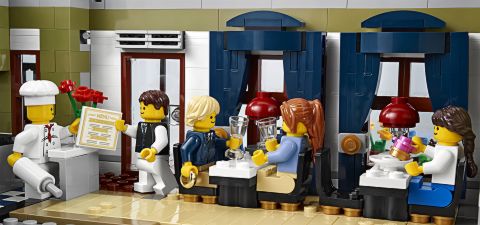
And here is the designer-video showing you all the details of both the outside and inside of the LEGO Modular Parisian Restaurant:
The LEGO Modular Parisian Restaurant is going to be available for sale directly through LEGO beginning January 2014 via LEGO stores, and the Online LEGO Shop. In the meantime you can check out the currently available LEGO Modular Buildings at the Online LEGO Shop.
So what do you think? How do you like the LEGO Parisian Restaurant? Would love to hear your opinion on this as it is such an interesting and unique set, so feel free to share and discuss in the comment section below! 😉
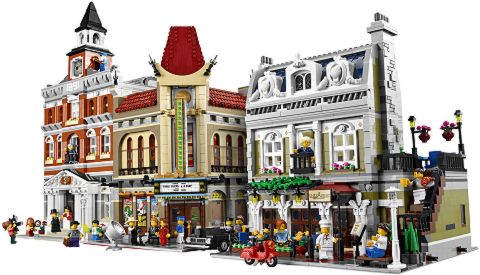
You might also like to check out the LEGO Modular Houses section for more news and discussions, or select from the following recent posts:













